Ideas
Covid-19 Testing And Death Rates: How Are Indian States Faring And What Is The Way Forward?
Urvashi Prasad
Jul 15, 2020, 10:39 AM | Updated 10:37 AM IST
Save & read from anywhere!
Bookmark stories for easy access on any device or the Swarajya app.

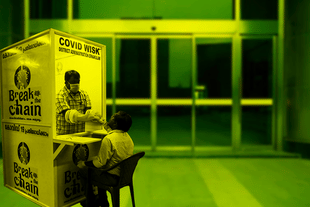
India is at a critical juncture in the containment and management of the Covid-19 epidemic. To a great extent, how we fare in the ultimate analysis depends on the actions we take now, especially with respect to expanding testing and minimising fatality rates.
Yes, the total number of Covid-19 cases in the country has crossed 9 lakh and the numbers can seem daunting but the metrics we should really be concerned about are tests conducted, positive test percentage and fatality rates.
Let us begin with testing.
At an overall level, India has ramped up testing significantly. From conducting around 700 Covid-19 tests per day in the second week of March to around 2.5 lakh tests per day currently, we have certainly come a long way.
Government efforts are focussed on increasing the capacity even further to 4 lakh tests per day, including rapid antigen kits and RT-PCR tests.
There are, however, significant disparities between states with respect to testing, and these need to be addressed urgently if we are to win the battle against Covid-19.
The recent experience in Delhi has made it amply clear that even a precarious situation can be turned out fairly quickly if the basic principles of testing, isolating those who test positive and treating those who require medical intervention in a timely manner, are followed.
An increase in the total caseload, if accompanied by a ramping up of testing, is in fact a good sign because it means that we will be able to identify where the infection is, prevent it from spreading to others and initiate early treatment for patients who are symptomatic.
On testing, one of the most important metrics we need to track on a daily basis is the positive test percentage (PTP) — the number of individuals who test positive for Covid-19 out of the universe of those who are tested every day.
The general guidance provided by the World Health Organization is that for us to be confident about the adequacy of testing, the test positivity should not exceed 10 per cent, and ideally should remain below 5 per cent.
At the India level, we are currently below the 10 per cent threshold. However, states like Maharashtra, Telangana, Bihar, West Bengal, Karnataka, Gujarat, Andhra Pradesh and Tamil Nadu have a PTP exceeding 10 per cent.
Maharashtra, in particular, has an extremely high PTP of 33 per cent indicating that testing in the state needs to be ramped up significantly.
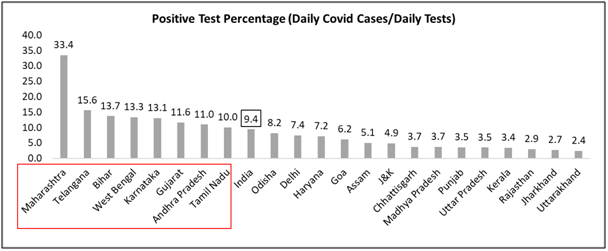
If we look at the PTP numbers alongside Covid-19 tests conducted per million population, the observation of inadequate testing in states like Telangana and Bihar is further reinforced.
States like Andhra Pradesh, Karnataka and Tamil Nadu have conducted a higher number of tests per million population compared to the overall India figure but the numbers need to be boosted even further given that the test positivity rate in these states is also high.
Of course, alongside increasing the quantum of testing we also need to be cognizant of quality. False negative results are a matter of particular concern and confirmatory tests must, therefore, be conducted, especially for those who are symptomatic.
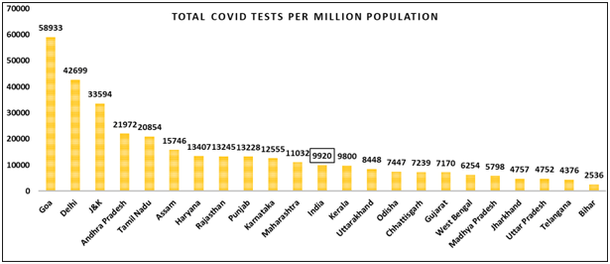
Next, let us look at Covid-19 related deaths. Thankfully, in India the death rate has been fairly low, especially when compared to many other high-burden countries.
India currently has around 17 Covid-19 deaths per million population, but most states are well below this number.
There are just four states where the total deaths per million population is considerably higher than the national figure and these are Delhi, Maharashtra, Gujarat and Tamil Nadu.
In fact, at the district level as well, 15 out of the top 20 districts with the highest number of total Covid-19 deaths are located in just these four states.
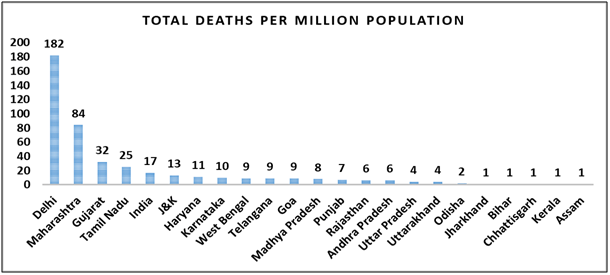
In terms of case fatality, India’s performance has consistently improved. The case fatality rate (CFR) is now 2.62 per cent with most states faring much better.
In fact, in states like Assam, while the overall Covid-19 case numbers have increased, the fatality rate has remained extremely low at just 0.25 per cent.
In some states, the CFR requires particular attention, namely Gujarat, Maharashtra, Madhya Pradesh, West Bengal and Delhi.
A few other states like Karnataka and Uttar Pradesh have also seen an increase in their CFR recently.
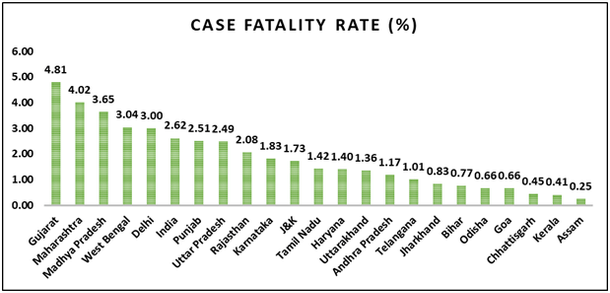
To minimise Covid-19 deaths, it is important to identify and monitor high-risk groups like the elderly and those with co-morbid conditions (diabetes, heart disease, kidney ailments) especially closely so that at the first sign of worsening symptoms prompt medical intervention can be provided.
As is now being done in several states, Covid-19 positive individuals who are in home isolation need to be equipped with pulse oximeters so that concentrators can be sent to their homes should oxygen levels drop or they can be hospitalised without delay.
Many other good practices are also being implemented by various states which should be adapted and replicated.
For instance, Gujarat has established partnerships with leading pulmonologists, critical care specialists and intensivists to identify better approaches for the management of seriously ill Covid-19 patient.
Tele-mentoring has also been initiated by a group of experts based in Ahmedabad to connect with ICUs dealing with Covid-19 patients on a regular basis.
Disclaimer: Views expressed are personal.
Director, Development Monitoring and Evaluation Office, NITI Aayog.





